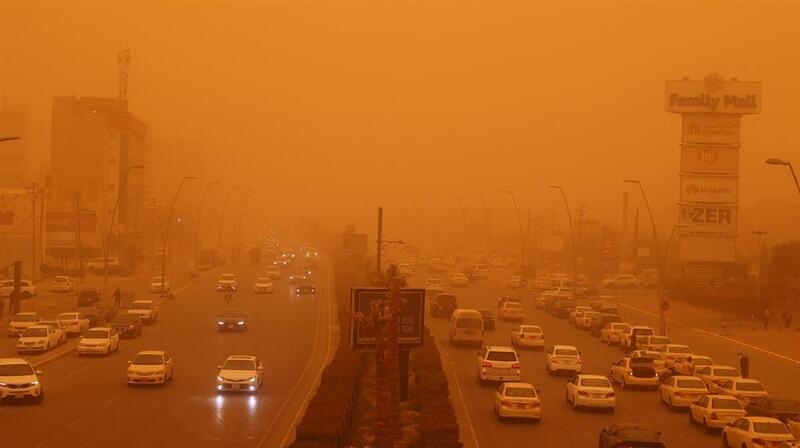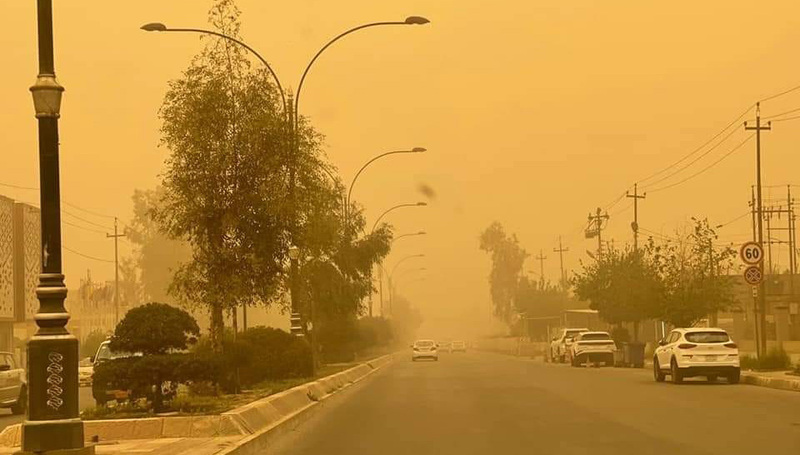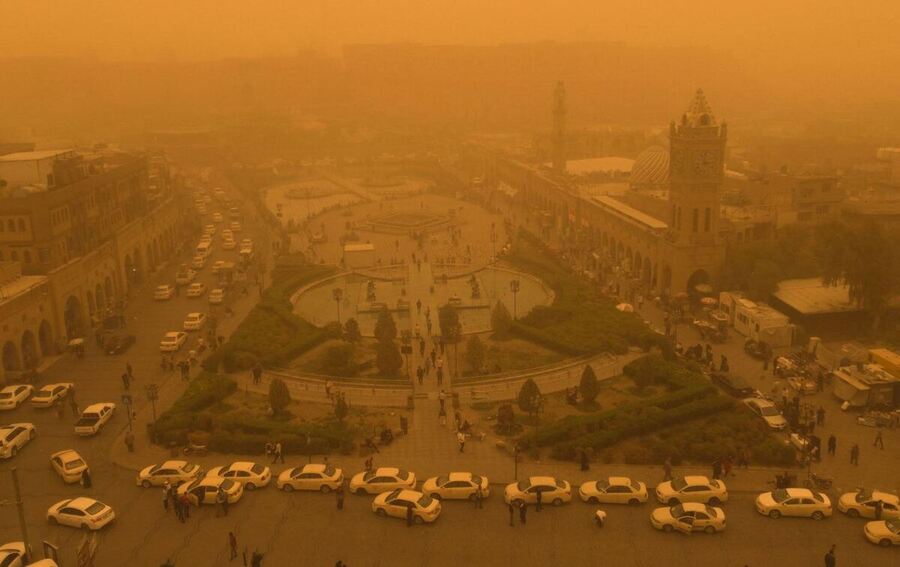In addition to the dust storms that happen in Iraq and the Kurdistan Region several times a year, the sewage, decreasing clean water resources, pollution of water resources, and use of enriched uranium in the past few years have threatened Iraq and Kurdistan Region's environment greatly. The medical reports announced that the reason for most of the life-threatening diseases is environmental pollution.
In the past few years, Iraq and the Kurdistan Region have faced dust storm waves which have caused many health problems for the citizens, and at the same time have long-term negative environmental impacts on the area.

The "dust storm" phenomenon happens mostly because of the heat being captured which results in climate change. Climate change itself happens due to the rainfall decreasing, the expansion of deserts, the decline of water resources in the area, and fires that happen in the forests which will result in global climate patterns.
Apart from dust storms, the flow of hundreds of tons of sewage in public places, or avoiding burning them or scientifically recycling them is another reason for the Iraq and Kurdistan Region's environmental changes.
According to a report from the General Technical Affairs of the Ministry of Environment of Iraq, almost 20 thousand tons of sewage is thrown away daily and the Ministry of Environment of Iraq thinks it necessary to apply scientific methods for using the sewage wastes.

Iraq or the Kurdistan Region do not have a plan for diminishing the sewages or recycling them which has led to some action such as burying the sewage in an unscientific way or burning them. Both of these methods have very severe effects on humans' health and environmental pollution.
The experts believe that the areas dedicated to storing waste have become the main reason for environmental pollution and hundreds of cases of suffocation have been recorded due to the smoke made from burning the waste. The smoke or smell spread after burning the waste can threaten human beings' health and since there is no process for recycling, not burning the sewage can result in the storage of a lot of waste.

Disease Spreads Due to Environmental Crisis
Based on the statistics, heart diseases, asthma, and stroke have become more common among people in addition to many other threatening diseases that have happened to people due to environmental pollution.
On the other hand, based on a statistic that was published by the Ministry of Environment of Iraq 90% of the rivers have been polluted due to heavy sewage flows into them. "Isa Fayaz" the director of the General Technical Affairs in the Ministry of Environment of Iraq reported that all the canals made for rainfall have become a canal for sewage flows that fill the rivers with heavy water and sometimes these canals are close to drinkable water canals. "In order to decrease the amount of river pollution, several meetings have been held in the Ministries Council to find immediate solutions for water pollution and preserving the canals, however, the results are not satisfying."

Like Iraq, the Kurdistan Region produces more than seven thousand tons of waste daily without a solution (for instance establishing a recycling factory) so that in this way the waste could be reused.
Apart from the decrease in the amount of rainfall, the drought of water resources, expansion of deserts, drinkable water pollution, and mixing of heavy waste into the rivers in the past years because of the use of uranium weapons, the negative impact on Iraq's environment has been major.

According to a report by the Russian Agency Novosti, which received information from Igor Kirilov commander of the Russian army's radiation, chemical, and biological protection forces, the United States has used about 300 tons of enriched uranium in Iraq in the past recent years.
According to the director of the Regional Environment Committee, if the government decides to, they can use the waste easily. They need to consider it necessary to take immediate steps to address environmental pollution, especially in protecting water and forest resources, reducing cars, and









